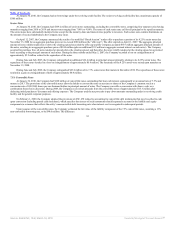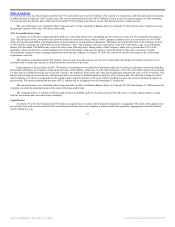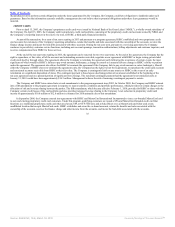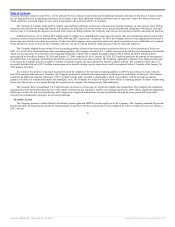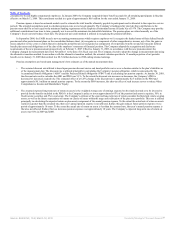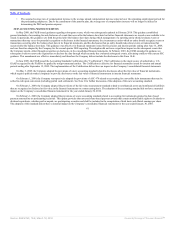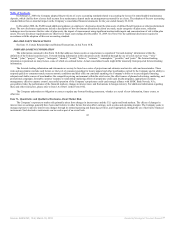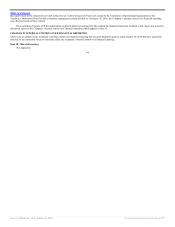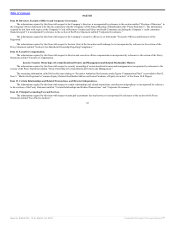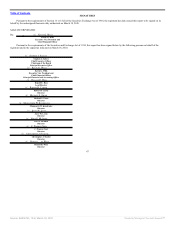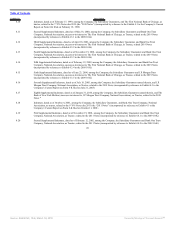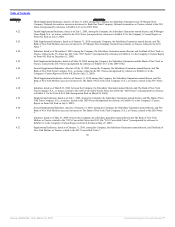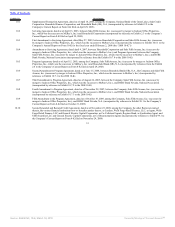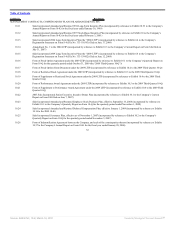Saks Fifth Avenue 2009 Annual Report Download - page 44
Download and view the complete annual report
Please find page 44 of the 2009 Saks Fifth Avenue annual report below. You can navigate through the pages in the report by either clicking on the pages listed below, or by using the keyword search tool below to find specific information within the annual report.
Table of Contents
On February 1, 2009, the Company adopted the provisions of a new accounting standard related to accounting by lessees for nonrefundable maintenance
deposits, which clarifies how a lessee shall account for a maintenance deposit under an arrangement accounted for as a lease. The adoption of the new accounting
standard did not have a material impact on the Company’s consolidated financial statements for the year ended January 30, 2010.
In December 2008, the FASB issued additional guidance on employers’ disclosures about the plan assets of defined benefit pension or other postretirement
plans. The new disclosure requirements include a description of how investment allocation decisions are made, major categories of plan assets, valuation
techniques used to measure the fair value of plan assets, the impact of measurement using significant unobservable inputs and concentrations of risk within plan
assets. The new disclosure requirements are effective for fiscal years ending after December 15, 2009. See Note 8 for the additional disclosures required in
accordance with the adoption of this new accounting standard.
RELATED PARTY TRANSACTIONS
See Item 13, Certain Relationships and Related Transactions, in this Form 10-K.
FORWARD-LOOKING INFORMATION
The information contained in this Form 10-K that addresses future results or expectations is considered “forward-looking” information within the
definition of the Federal securities laws. Forward-looking information in this document can be identified through the use of words such as “may,” “will,”
“intend,” “plan,” “project,” “expect,” “anticipate,” “should,” “would,” “believe,” “estimate,” “contemplate,” “possible,” and “point.” The forward-looking
information is premised on many factors, some of which are outlined below. Actual consolidated results might differ materially from projected forward-looking
information.
The forward-looking information and statements are or may be based on a series of projections and estimates and involve risks and uncertainties. These
risks and uncertainties include such factors as: the level of consumer spending for luxury apparel and other merchandise carried by the Company and its ability to
respond quickly to consumer trends; macroeconomic conditions and their effect on consumer spending; the Company’s ability to secure adequate financing;
adequate and stable sources of merchandise; the competitive pricing environment within the retail sector; the effectiveness of planned advertising, marketing, and
promotional campaigns; favorable customer response to relationship marketing efforts of proprietary credit card loyalty programs; appropriate inventory
management; effective expense control; successful operation of the Company’s proprietary credit card strategic alliance with HSBC Bank Nevada, N.A.;
geo-political risks; the performance of the financial markets; changes in interest rates; and fluctuations in foreign currency. For additional information regarding
these and other risk factors, please refer to Item 1A of Part I in this Form 10-K.
The Company undertakes no obligation to correct or update any forward-looking statements, whether as a result of new information, future events, or
otherwise.
Item 7A. Quantitative and Qualitative Disclosures About Market Risk.
The Company’s exposure to market risk primarily arises from changes in interest rates and the U.S. equity and bond markets. The effects of changes in
interest rates on earnings generally have been small relative to other factors that also affect earnings, such as sales and operating margins. The Company seeks to
manage exposure to adverse interest rate changes through its normal operating and financing activities, and if appropriate, through the use of derivative financial
instruments. Such derivative instruments can be used as part of an overall risk
42
Source: SAKS INC, 10-K, March 18, 2010 Powered by Morningstar® Document Research℠


